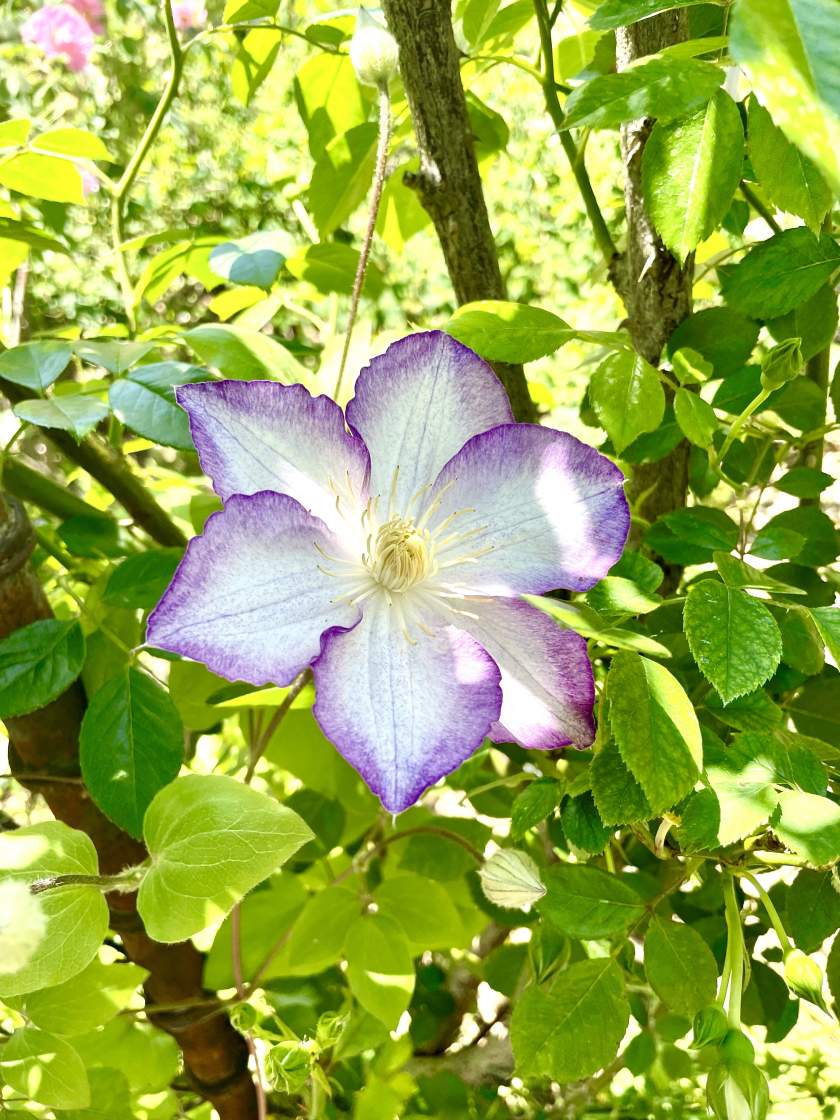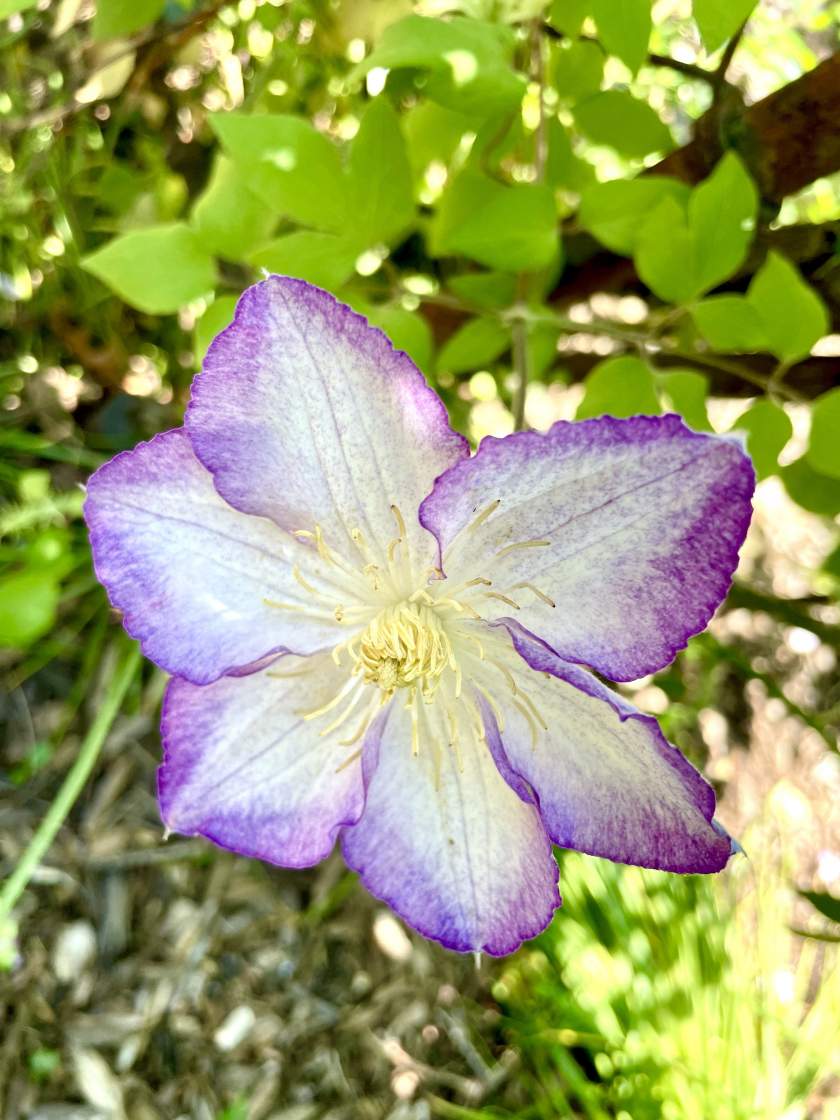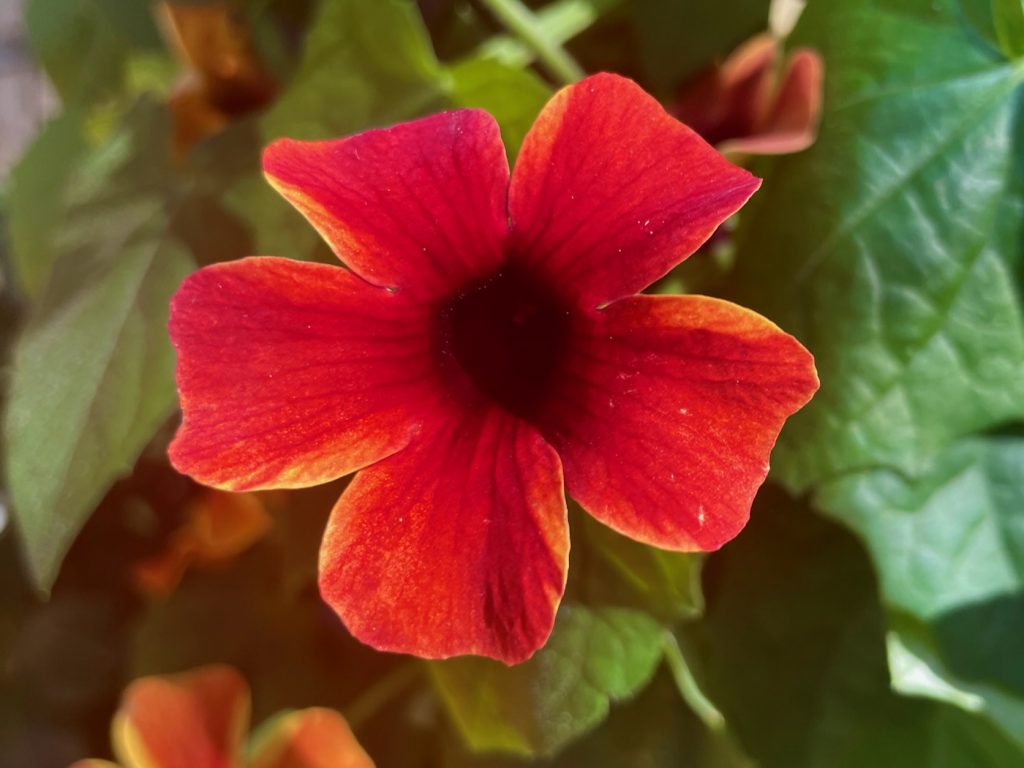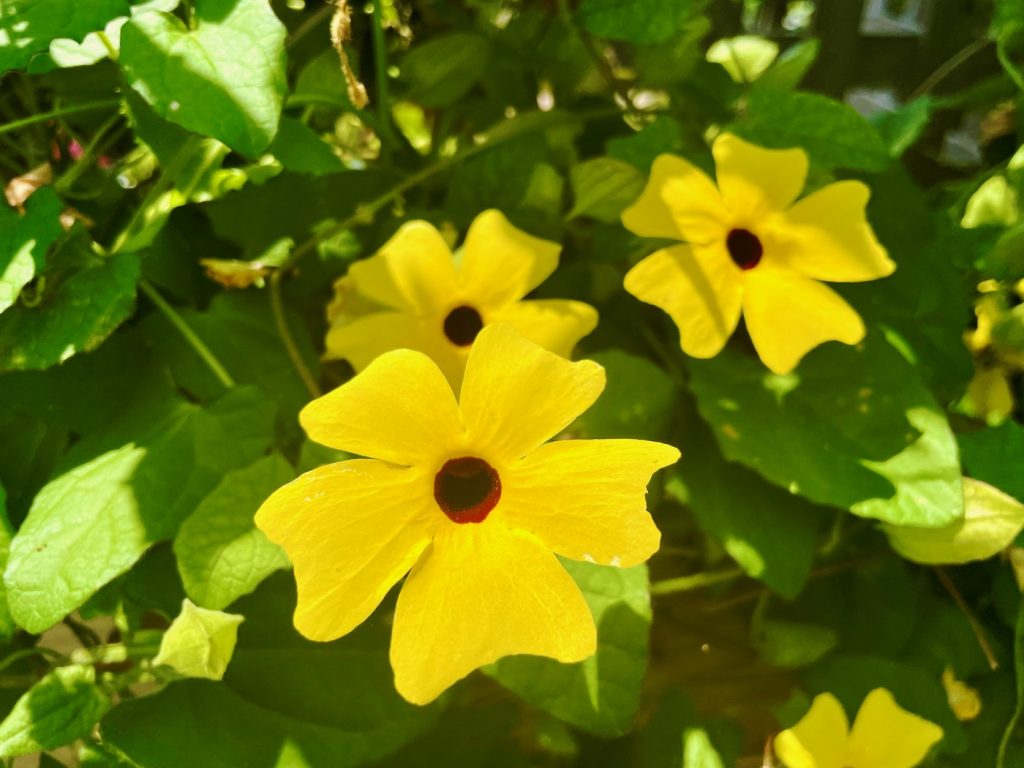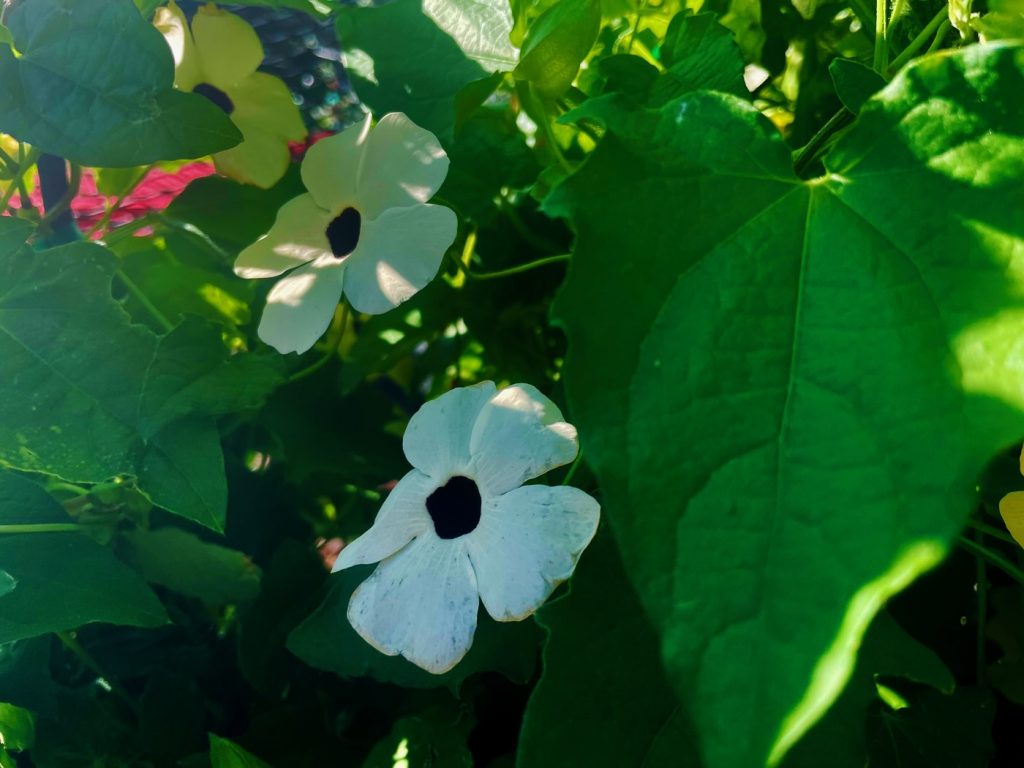Discover the Enchanting Clematis ‘Lucky Charm’: A Pastel Delight
Clematis ‘Lucky Charm’ is a captivating hybrid bred by J. Van Zoest nurseries. With its delicate pastel hues and wide-eyed flowers, this variety is a hidden gem for garden enthusiasts. While specific parentage information is withheld, the breeder classifies ‘Lucky Charm’ within the Jackmanii Group, which is recognized as a subset of the Late Large-flowered Group. It first made its appearance on the horticultural scene around 2007, gaining recognition for its exceptional beauty and vigor. Clematis ‘Lucky Charm’ belongs to the family Ranunculaceae.
Characteristics and Description: The flowers of Clematis ‘Lucky Charm’ are small to medium-sized, starting as pure white and gently transitioning to a pale violet at the margins. The pedicels, or flower stalks, exhibit a rich red-purple color, adding an additional touch of allure to the blooms. Each flower measures approximately 6-8cm in diameter and showcases (4-)6 tepals that are broadly elliptic, overlapping, and adorned with slightly wavy margins. The tepals feature a blunt tip with a small apiculus, adding an elegant finish to the floral display.
Complementing the enchanting blossoms, the oblong leaves of ‘Lucky Charm’ shine in a lush shade of green, with subtle notes of burgundy. This foliage provides an exquisite backdrop to the delicate flowers, enhancing the overall visual appeal of the plant.
Flowering Season: Clematis ‘Lucky Charm’ graces the garden with its blossoms from June through September. Its extended flowering season ensures a constant source of beauty and color throughout the summer months, making it a prized addition to any landscape.
Cultivation of Clematis ‘Lucky Charm’:
To successfully cultivate Clematis ‘Lucky Charm,’ consider the following guidelines:
Sunlight: Plant ‘Lucky Charm’ in a location that receives full sun or partial shade. This clematis variety thrives when provided with ample sunlight, which enhances its vibrant coloration and promotes healthy growth.
Watering: Maintain regular watering, especially during the first year after planting. Ensure the soil remains moist but not overly saturated. Consistent moisture is key to establishing a strong and healthy root system.
Soil: ‘Lucky Charm’ prefers moist, well-drained soil with a slightly acidic pH level ranging from 6.5 to 7.0. Adequate drainage is crucial to prevent waterlogged conditions that can harm the plant’s roots.
Pests and Disease: Like many clematis varieties, ‘Lucky Charm’ may be susceptible to aphids, powdery mildew, and clematis wilt. Monitor the plant for signs of infestation or disease and take appropriate measures to address them. Insecticidal soap or neem oil can be used for aphids, while a fungicide can help combat powdery mildew. If clematis wilt is suspected, seek advice from local experts for appropriate treatment options.
Pruning: Clematis ‘Lucky Charm’ falls into Group 3 for pruning purposes. As a type 3 clematis, it blooms on old wood that developed in the previous year. Prune the plant in early spring, after the flowering period has ended. Trim back approximately one-third of the plant to encourage new growth and ensure abundant blooms the following year.
Propagation:
There are two common methods for propagating Clematis ‘Lucky Charm’:
- Division: Carefully dig up the plant and divide the root ball into several sections using a sharp knife. Each section should contain at least 3-4 growth buds (eyes). Plant these divisions in well-drained soil, ensuring they receive regular watering until established.
- Cuttings: Select a healthy stem measuring 6-8 inches in length. Remove the leaves from the lower half of the cutting and dip the cut end in the rooting hormone. Plant the cutting in a well-draining potting mix and maintain moisture in the soil. After approximately 4-6 weeks, the cutting should develop roots. At this point, it can be transplanted into a pot or directly into the garden for long-term growth.
Additional Care Tips:
Here are some additional tips to ensure the optimal care of Clematis ‘Lucky Charm’:
- Apply a layer of mulch around the base of the plant to help retain moisture, regulate soil temperature, and suppress weed growth.
- Protect the plant from strong winds by providing a sheltered location or installing a trellis or support structure.
- Deadhead spent flowers regularly to encourage continuous blooming throughout the season.
- In colder climates, provide winter protection by covering the plant with a burlap sack or similar material to shield it from harsh weather conditions.
Experience the Captivating Beauty of Clematis ‘Lucky Charm’: Clematis ‘Lucky Charm’ is a mesmerizing cultivar that captivates with its delicate pastel flowers and striking color contrast. With proper care and attention, this enchanting clematis will flourish, adding a touch of elegance and charm to your garden. Whether trained on a trellis, arbor, or pergola, ‘Lucky Charm’ is sure to be a standout performer, rewarding you with abundant blooms and an alluring floral display year after year.
